Bark : damage
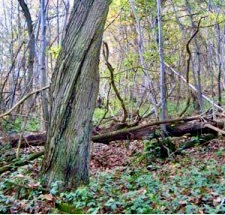
Wind, fire and frost can seriously damage or kill trees. Animals also wound them when they feed on bark tissues, and when they rub their bodies or antlers against tree trunks. Insects, like bark beetles can cause significant damage damage to woodlands and forests.
The extent of damage to trunks and the bark of trees varies considerably in relation to the nature of the ‘attack’. If the damage to the bark is severe and the vascular cambium is exposed then neither new water nor sugar conducting tissue can be formed. Damage to the (outer) cork cambium (phellogen) will limit the trees ability to form the outer tissues of the bark - which protect the tree. If the damage is restricted to the outermost bark layer then this will render the tree more susceptible to further damage (be it from herbivores or temperature extremes).
Damage by herbivores depends on the availability of other food and water resources. A range of animals feed on bark tissues varying from deer, squirrels, orang utans, rhinos, beavers to porcupines. Animals are often quite selective in their choice of tree species and consequently can have significant effects on the make up of plant communities. Bushbabies generally feed on insects during the wet seasons, but when there is drought they feed on the resins / gum that flows from the trees in their acacia-dominated woodlands. Gums and resins exude as a response to wounding to protect the tree from further damage, but as they contain carbohydrates and minerals, they contribute to the diet of animals like the Bushbabies .
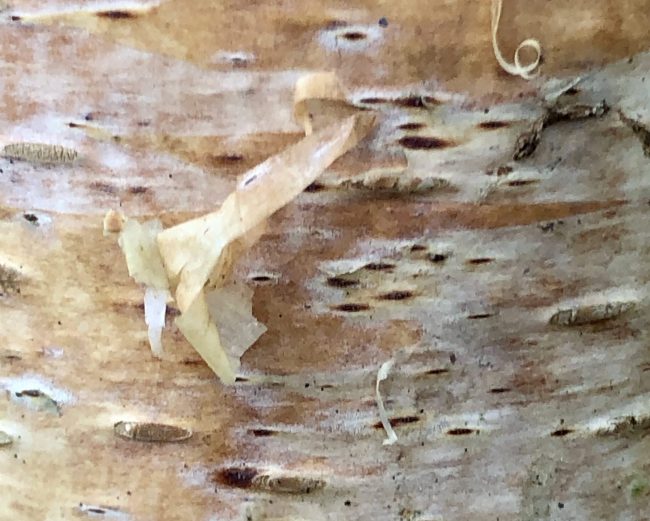
Birch bark
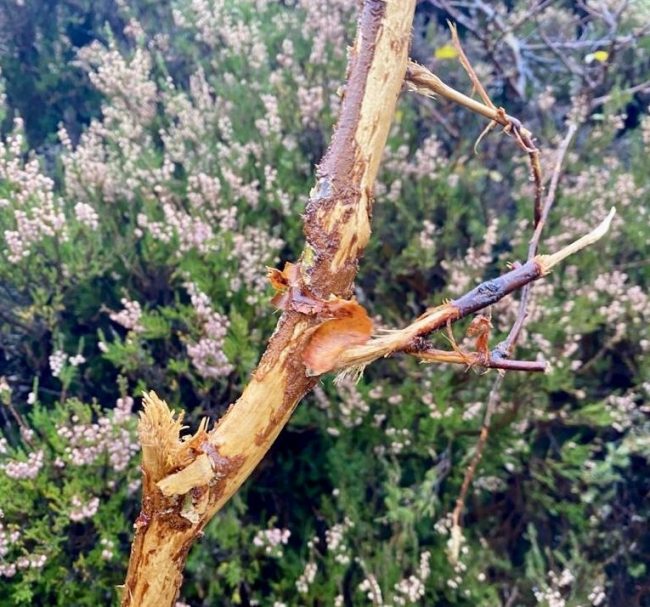
Deer damage
In the U.K, significant bark damage is done by deer. Damaged but small woody stems often have a ragged cut end, where a deer has bitten part way through the stem and then tugged the leafy shoot off. In comparison, rabbit damage on younger trees is generally recognised by a clean cut as they have teeth in the upper and lower jaw.
Woodlands throughout the U.K. currently support very large populations of various species of deer. The indigenous deer species are Roe Deer and Red Deer. Fallow Deer were introduced by the Normans but in the late C19th / early C20th Chinese water deer, Reeves Muntjac and sika deer arrived. The three most widespread and abundant deer species now are Roe deer, Fallow deer and Reeves’ muntjac. Deer will eat bark, especially during the winter months when other food is scarce. In the summer, bark damage can occur when male deer rub their heads against the trunks of trees
- to remove the outer skin or ‘velvet’ from their new formed antlers or
- to scent-mark their territories.
Deer damage can decimate plant communities and prevent natural regeneration of trees. It can be a major problem in natural woodlands and commercial plantations. Tree shelters and guards can help protect against deer damage.
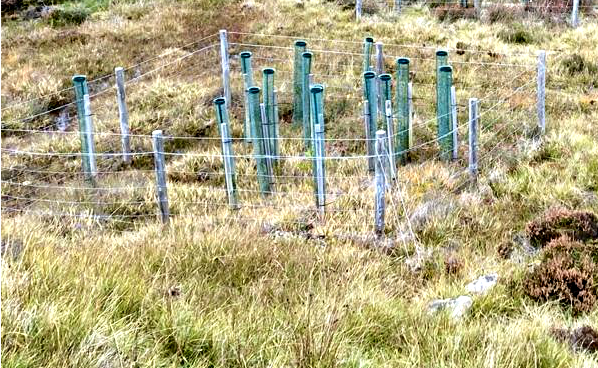
Tree guards, to protect young trees on moorland
The Forestry Commission has produced a useful guide (in PDF format) on tree protection which can be downloaded here.
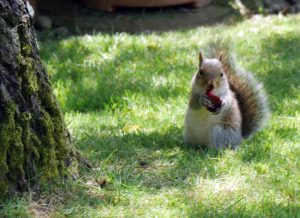 Deer are not alone in causing bark damage. Grey squirrels are also culprits, as they damage trees by gnawing the stem to reach the ‘sweet’, sap-filled tissues (phloem tissue) just below the bark. If this gnawing encircles the stem, the tree is ‘ringed’. This results in the phloem tissue being removed and consequently the movement of sugars stops and the tree will die. This bark stripping mainly takes place between late Spring and early Summer. Trees like beech, oak, sweet chestnut, pine, larch, Norway spruce and sycamore, mature but not old, are often the subject of attack, especially when the ‘density’ of squirrels is high. The slender twigs of young trees don’t support their weight and old trees have a thick bark - it is too much of a challenge!.
Deer are not alone in causing bark damage. Grey squirrels are also culprits, as they damage trees by gnawing the stem to reach the ‘sweet’, sap-filled tissues (phloem tissue) just below the bark. If this gnawing encircles the stem, the tree is ‘ringed’. This results in the phloem tissue being removed and consequently the movement of sugars stops and the tree will die. This bark stripping mainly takes place between late Spring and early Summer. Trees like beech, oak, sweet chestnut, pine, larch, Norway spruce and sycamore, mature but not old, are often the subject of attack, especially when the ‘density’ of squirrels is high. The slender twigs of young trees don’t support their weight and old trees have a thick bark - it is too much of a challenge!.
Bark is also subject to attack by bark beetles. In and around the West Coast of the United States, the destruction of vast areas of forest has occurred. The loss of these forests is due to a Bark Beetle that devours the soft tissues underneath the bark. An individual beetle is quite small, nevertheless vast areas of forest have been ‘lost’ due to the activities of these beetles. They breed and feed beneath the bark, damaging the phloem and cambium (the latter forms new xylem and phloem tissue). Consequently, the tree's transport systems begin to fail and rendering the tree liable to attack by fungi and other micro-organisms.
Comments are closed for this post.
